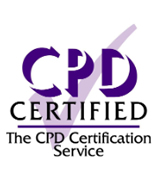Statistical Thinking for Non-Statisticians in Drug Regulation – Level 1GBP GBP
Course Agenda
 This course is primarily concerned with statistical methodology for the design and analysis of clinical trials, planned and conducted within the pharmaceutical industry. Much of the methodology presented is in fact applicable on a broader basis and can be used in observational studies and in clinical trials outside of the pharmaceutical sector; nonetheless the primary context is clinical trials and pharmaceuticals.
This course is primarily concerned with statistical methodology for the design and analysis of clinical trials, planned and conducted within the pharmaceutical industry. Much of the methodology presented is in fact applicable on a broader basis and can be used in observational studies and in clinical trials outside of the pharmaceutical sector; nonetheless the primary context is clinical trials and pharmaceuticals.
The course is aimed at non-statisticians working in the Pharmaceutical Industry and will be suitable for physicians, investigators, clinical research scientists,medical science liaison (MSL), medical writers, regulatory personnel, statistical programmers and senior data managers. Statisticians moving from other areas of application outside of pharmaceuticals may also find the course useful in that it places the methods that they are familiar with in context for their new environment.
The course topics subdivided by section are detailed below.
1. Basic Issues in Clinical Trial Design View Demo
- Placebo’s and Blinding
- Randomisation
- Signal and Noise
- Endpoint Types
- Superiority, Equivalence and Non-Inferiority
2. Sampling and Inferential Statistics
- Sample and Population
- Sample Statistics and Population Parameters
- The Normal Distribution
- Sampling and Standard Errors
3. Confidence Intervals and p-Values
- Confidence Intervals
- Hypothesis Testing
- The p-Value
- One-Tailed and Two-Tailed Tests
4. Intention to Treat, Analysis Sets and Missing Data
- The Principle of ITT
- Examples in the Application of ITT
- The Practice of ITT
- The Per-Protocol Set
- Withdrawals and Missing Data
5. Diagnosis
- Sensitivity and Specificity
- Other Quantities
- Prevalence
- ROC Curves
6. Tests for Simple Treatment Comparisons
- Statistical Testing
- Unpaired t-Test
- Non-Parametric Tests
- The Chi-Squared Test for Binary Data
- Odds Ratio and Relative Risk
7. Power and Sample Size View Demo
- Type I and Type II Errors
- Power
- Calculating Sample Size
- Link Between p-Values and Confidence Intervals
8. Multiplicity
- Inflation of the Type I Error
- How Multiplicity Can Arise?
- Bonferroni Correction
- Hochberg Correction
- Regulatory View on Multiplicity
- Importance of Pre-Planning
- Avoiding Adjustment including Hierarchical Testing
- Subgroup Testing
- Interim Analysis
9. The Analysis of Survival Data
- Time to Event and Censoring
- Kaplan-Meier Curves
- Logrank Test
- Hazard Rate and Hazard Ratio
- Independent Censoring
10. Equivalence and Non-Inferiority View Demo
- Demonstrating Similarity
- Establishing Equivalence
- Establishing Non-Inferiority
- Choice of Delta – Non-Inferiority
- Switching between Non-Inferiority and Superiority